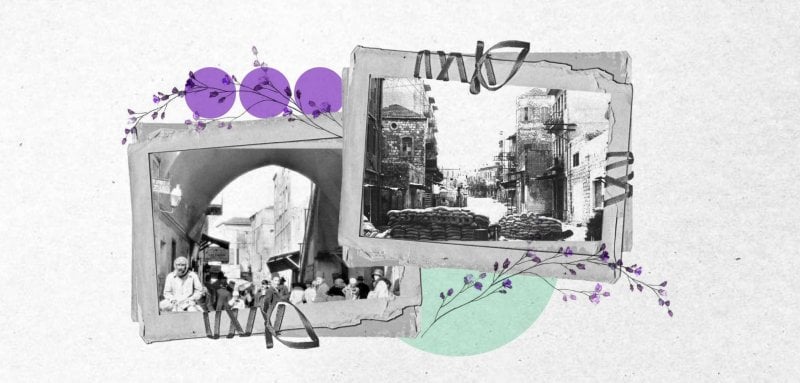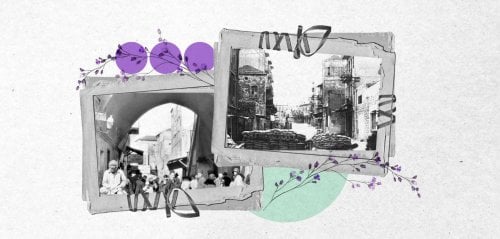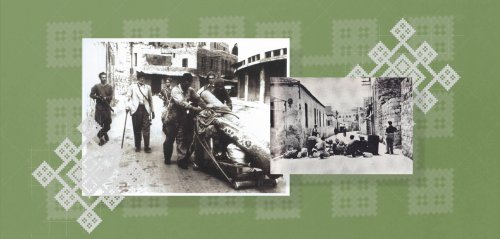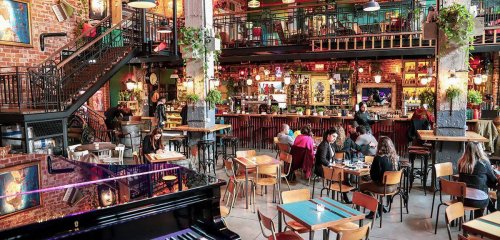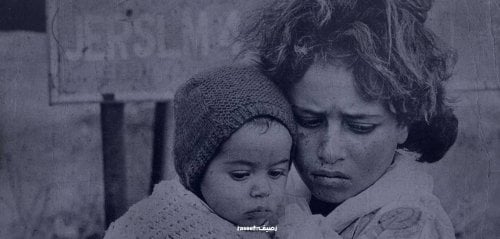On a day like today, 76 years ago, on April 22 1948, the city of Haifa fell. But this fall did not kill the city, which with each instance of oppression strives to be reborn; nor did it kill the significance the city holds for many Palestinians and Arabs.
We, who do not measure time quantitatively but rather by the Greek notion of kairos (the moments humans face their own experiences), look at Haifa as an experience. We read the city's history as if it were a past kneaded into the present, and a future that unfolds as we gaze toward the sea. We see and read it as dynamic and moving, shaped by its people throughout history.
Several years ago, on the anniversary of the fall of Haifa, I received an invitation to attend a seminar titled ‘Haifa Started Here’. It is a phrase by Mahmoud Darwish, later turned into a song by Marcel Khalifeh. The phrase intrigued me, and led me to wonder where this enchanting city, nestled between mountain and sea, truly began. The city is rich with stories and fates, still alive to this day.
Several years ago, I received an invitation to attend a seminar titled ‘Haifa Started Here’. It is a phrase by Mahmoud Darwish, later turned into a song by Marcel Khalifeh. The phrase intrigued me, and led me to wonder where this enchanting city, nestled between mountain and sea, truly began. The city is rich with stories and fates, still alive to this day.
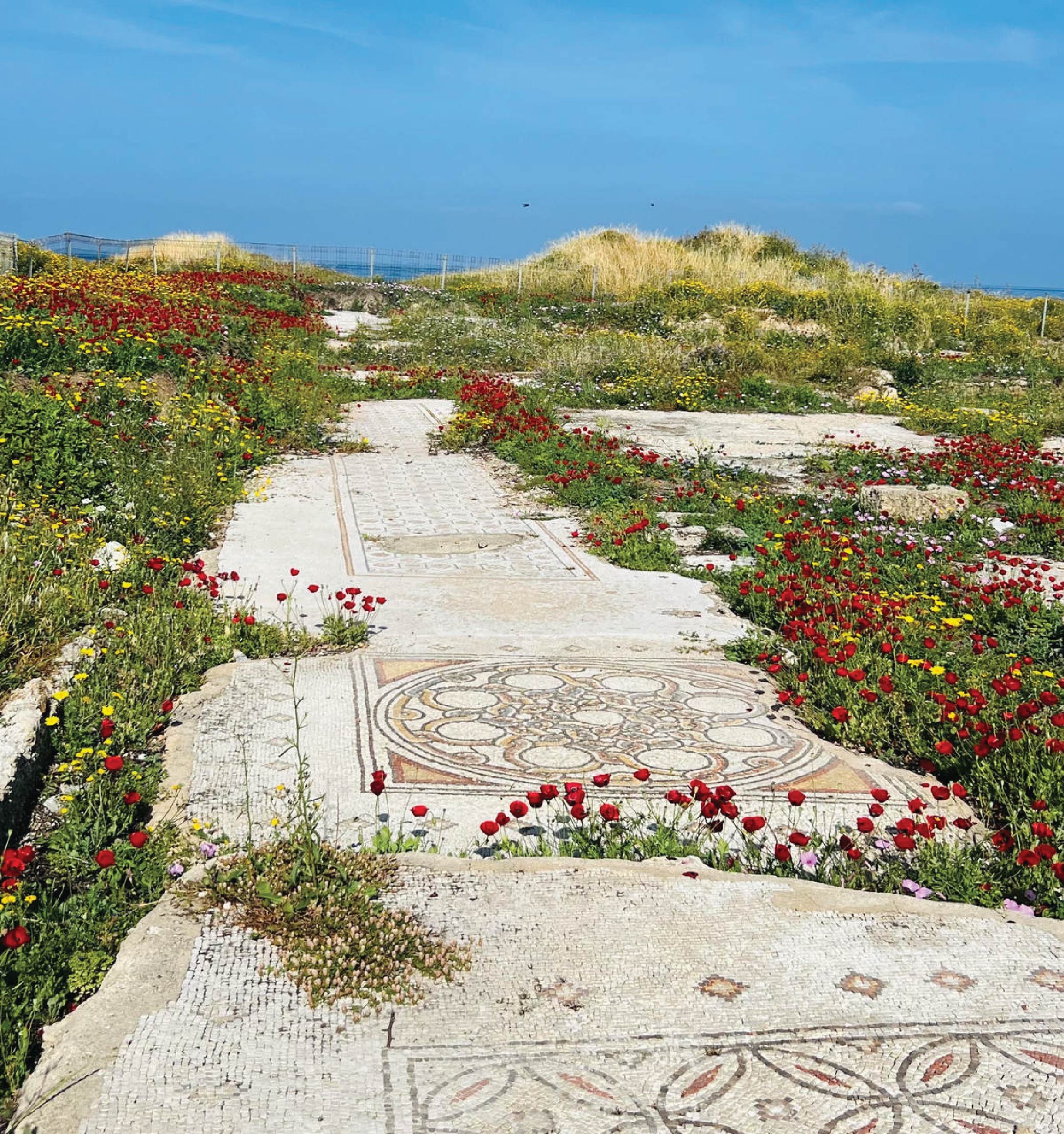 Tel El-Samak – Photograph by Rana Matar
Tel El-Samak – Photograph by Rana Matar
Tel El-Samak... Here I began
They say Haifa started here, from this hill overlooking the sea, between the railway and the beach, on the southern side of the city. At the time, during the Ottoman period, before the “new” Haifa was built by Zahir al-Umar, between 1758 and 1761, Haifa was a small fishing village. Tel El-Samak is even more beautiful in the spring, when the wildflowers and remnants of Canaanite-Phoenician mosaics blend into one.
This coastal line remains beautiful, devoid of urban development, except for one large building, the Israeli Institute for Seas and Lakes Research. Despite the clean concrete walking paths and bike lanes recently built by the Haifa municipality, the beauty of the beginnings and origin of our story can still be felt.
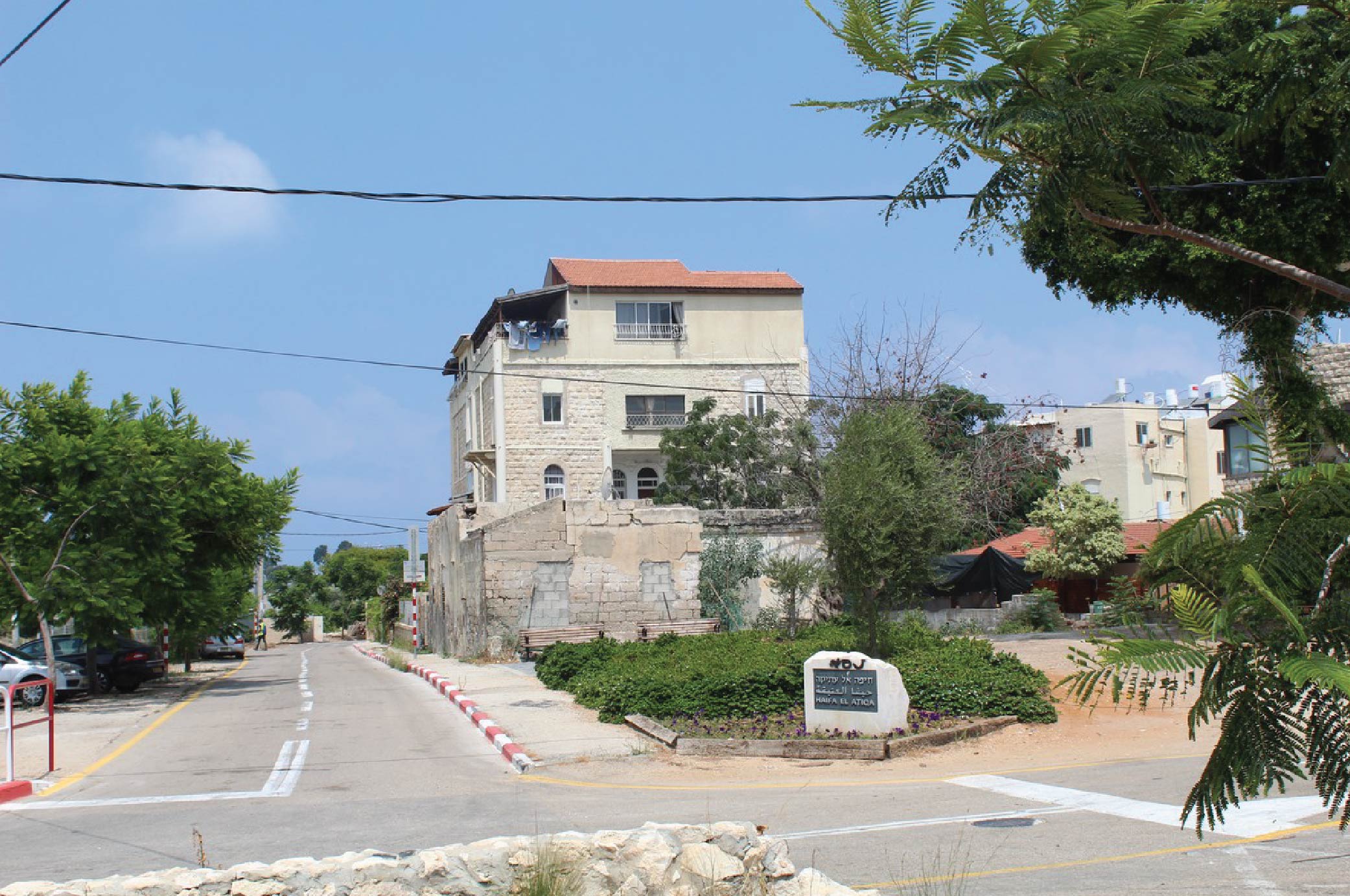 Old Haifa ( "Haifa Al-Atiqah") – Photograph by Rouda Ghanaim
Old Haifa ( "Haifa Al-Atiqah") – Photograph by Rouda Ghanaim
The Al-Mahatta neighborhood resists erasure
Heading north from Tel El-Samak along the coastline, we reach the al-Mahatta neighborhood. This neighborhood is one of the oldest in Haifa, hence its Arab name Al-Atiqah. It was one of the most densely populated areas due to its strategic location and proximity to the beach and the railroad built by the British, connecting Egypt to Haifa. Later, the station was connected to the Hejaz Railway, turning Haifa into the convergence point of three continents.
Most local families were displaced from the neighborhood during the Nakba. Some stayed, in remarkable resilience, although only a few original houses and a church remain.
The main street bustles with tourists, Arab cafes and restaurants. Until 1974, the street was called Carmel Avenue, before being renamed Ben Gurion Boulevard after the first Prime Minister of the State of Israel.
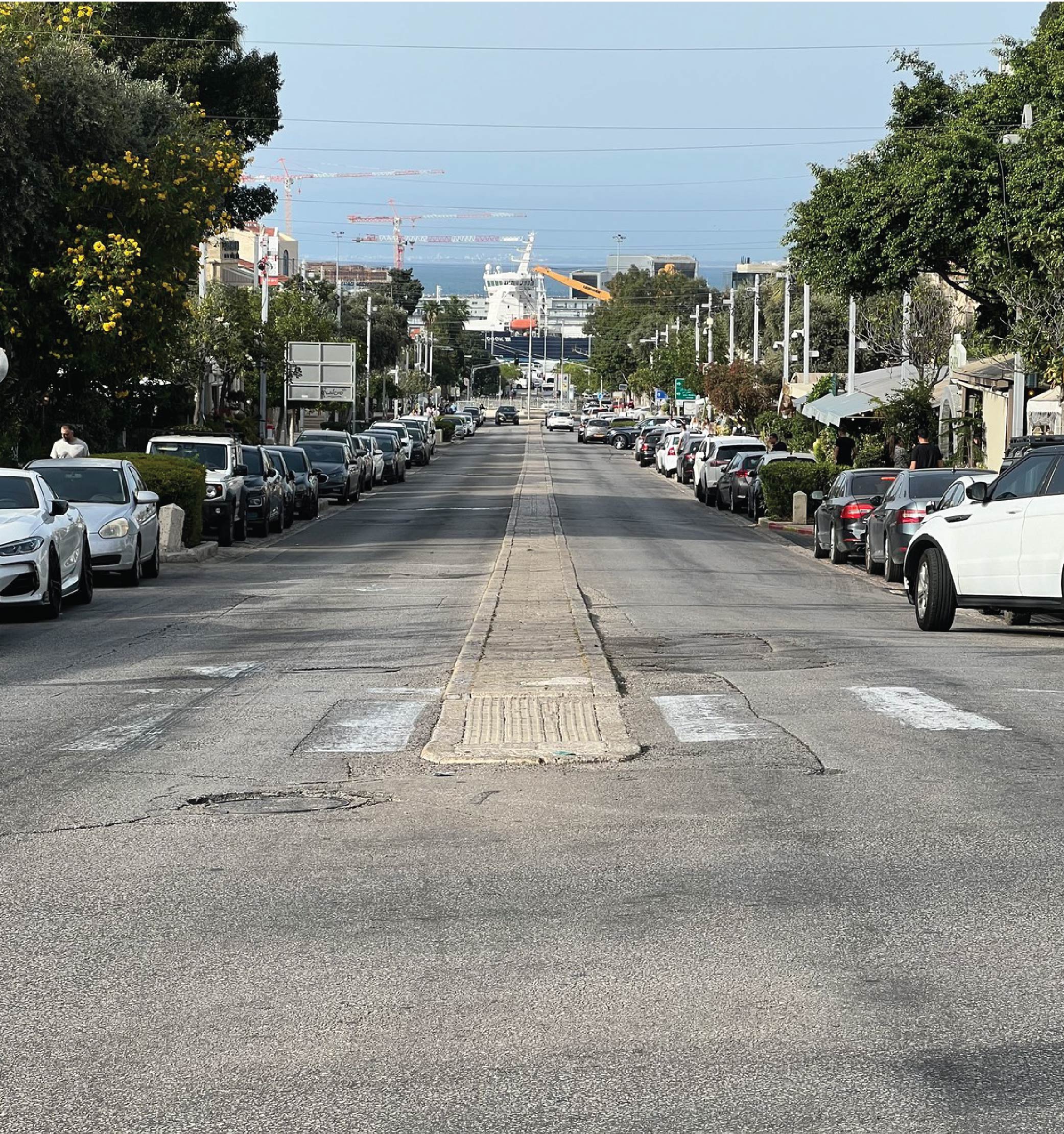 Carmel Avenue
Carmel Avenue
Carmel Avenue, or Ben Gurion Boulevard, or Abu Nawas Street?
Traveling leads us to the heart of the city. In the German Quarter, the buildings of the German Templer colony, built in 1869, remain standing. Rawda Ghanaim, a history researcher, tells Raseef22 that the neighborhood “was established during the Ottoman rule of Palestine by a group of German settlers who belonged to a religious movement called the Templers.” This religious group originated in the Kingdom of Württemberg in Germany. The German Quarter considered the first neighborhood designed in modern European style in Palestine.
The main street bustles with tourists, Arab cafes and restaurants. Until 1974, the street was called Carmel Avenue, before being renamed Ben Gurion Boulevard in honor of the first Prime Minister of the State of Israel.
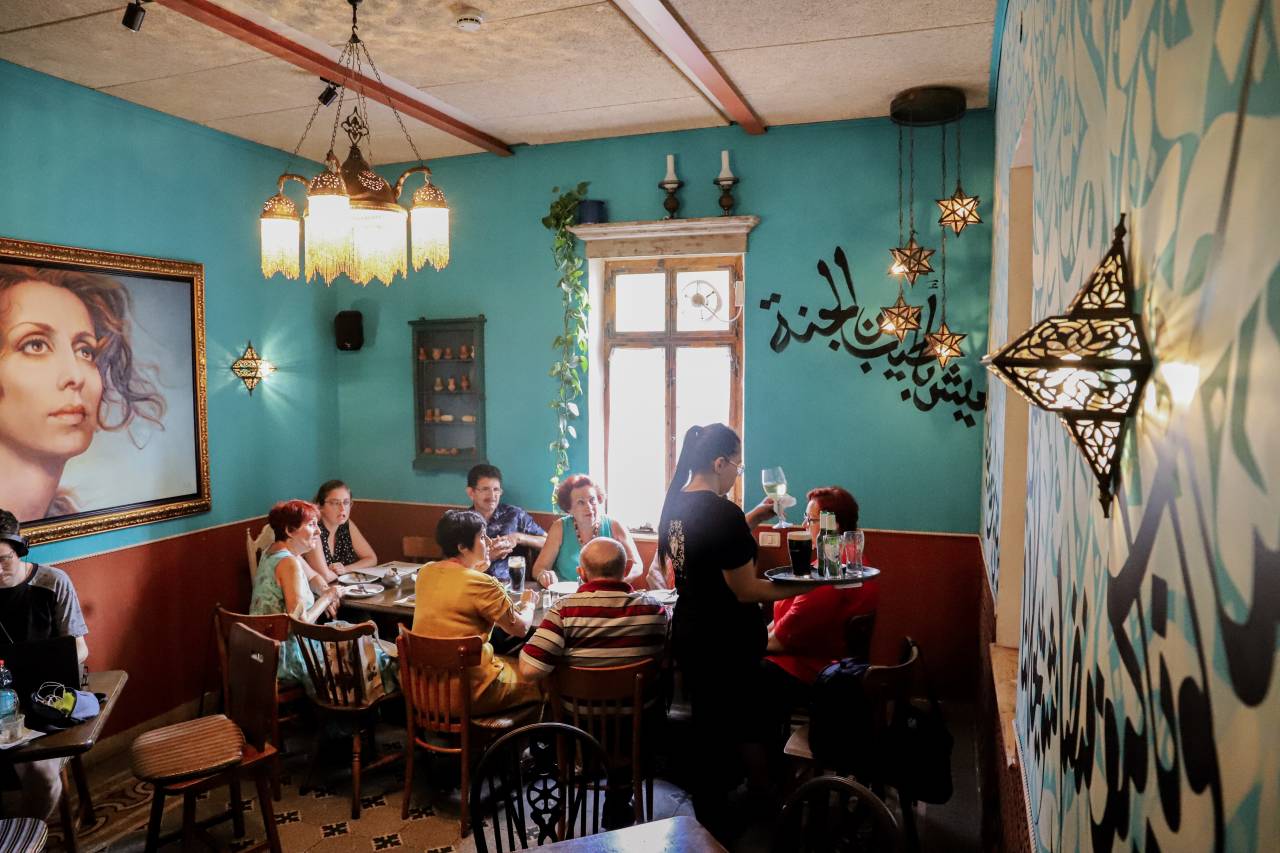 Fattoush Cafe – Photograph by Heba Khatba
Fattoush Cafe – Photograph by Heba Khatba
In the early 2000s, the street name was once again changed, to Abu Nawwas Street. According to journalist Alaa Hlehel, “In 2002, we founded the Tervizion magazine in Haifa. This coincided with the beginning of the transformation of Ben Gurion Boulevard or Carmel Avenue into a vibrant center for Arab cafes, some of which hosted cultural activities. In my weekly magazine column, I published a letter to the head of the Haifa municipality asking him to change the name of the street to Abu Nawas, which resembles the character of the street. People loved this idea, and the name became popular among the locals.”
It is on this street that the first Arab café in Haifa, Fattoush, opened in the late 1990s. It became a cultural and artistic hub, where patrons meet, work, discuss politics, literature, and art.
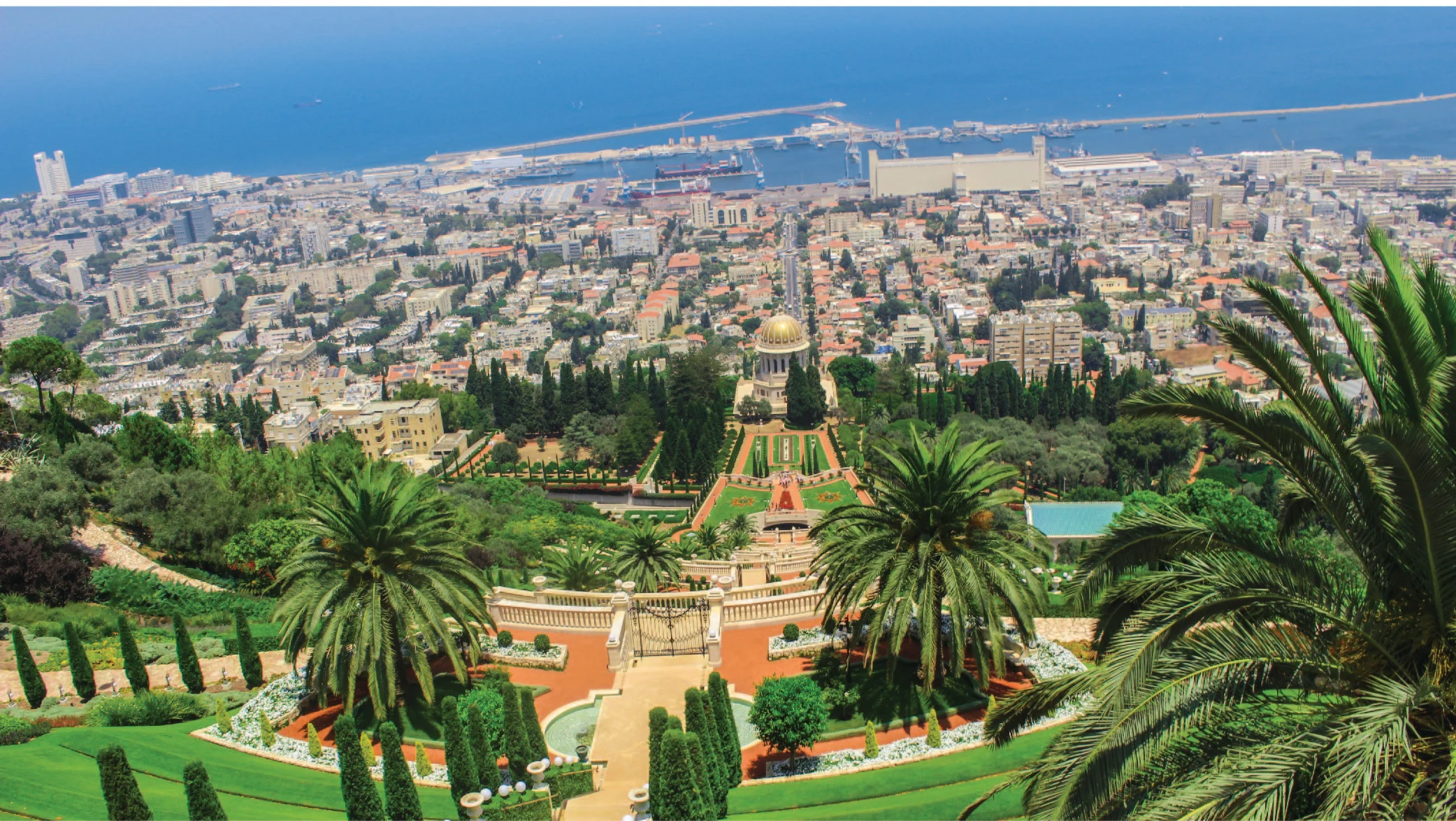 Haifa
Haifa
The Bahá'í Gardens: A symbol unlike the city
Upon leaving Fattoush, and looking to the right, we see the Bahá'í Gardens. Work on the gardens began in 1987. The Bahá'í community has maintained a presence in Palestine since the exile of Baháʼí founder Bahá'u'lláh by the Ottoman Sultan to the city of Acre in 1868.
The Bahá'í Faith is based on the teachings of two divine messengers who lived in the nineteenth century. One of them was the Báb (the herald messenger who brings good tidings according to the Bahá'í Faith).
The shrine belongs to Ali Muhammad Shirazi, known as the Báb, the founder and herald of the Bahá'í Faith. Báb was executed in Tabriz, Iran, in 1850.
The hanging Bahá'í Gardens on Mount Carmel have become one of the most famous symbols of contemporary Haifa, despite having no connection to the indigenous population or their history. It makes one wonder, what could have been a symbol of Haifa if hadn't fallen in the Nakba?
In her book, Haifa in Oral Memory: Neighborhoods, Houses, and People, Rawda Ghanaim suggests that Haifa Port could have been a symbol of the city. It was especially significant during the British colonial period. “If the city had not been occupied in 1948, the port would have remained the Palestinian gateway to Haifa until today,” writes Ghanaim.
The hanging Bahá'í Gardens on Mount Carmel have become one of the most famous and widely consumed symbols of contemporary Haifa, despite having no connection to the indigenous population or their history.
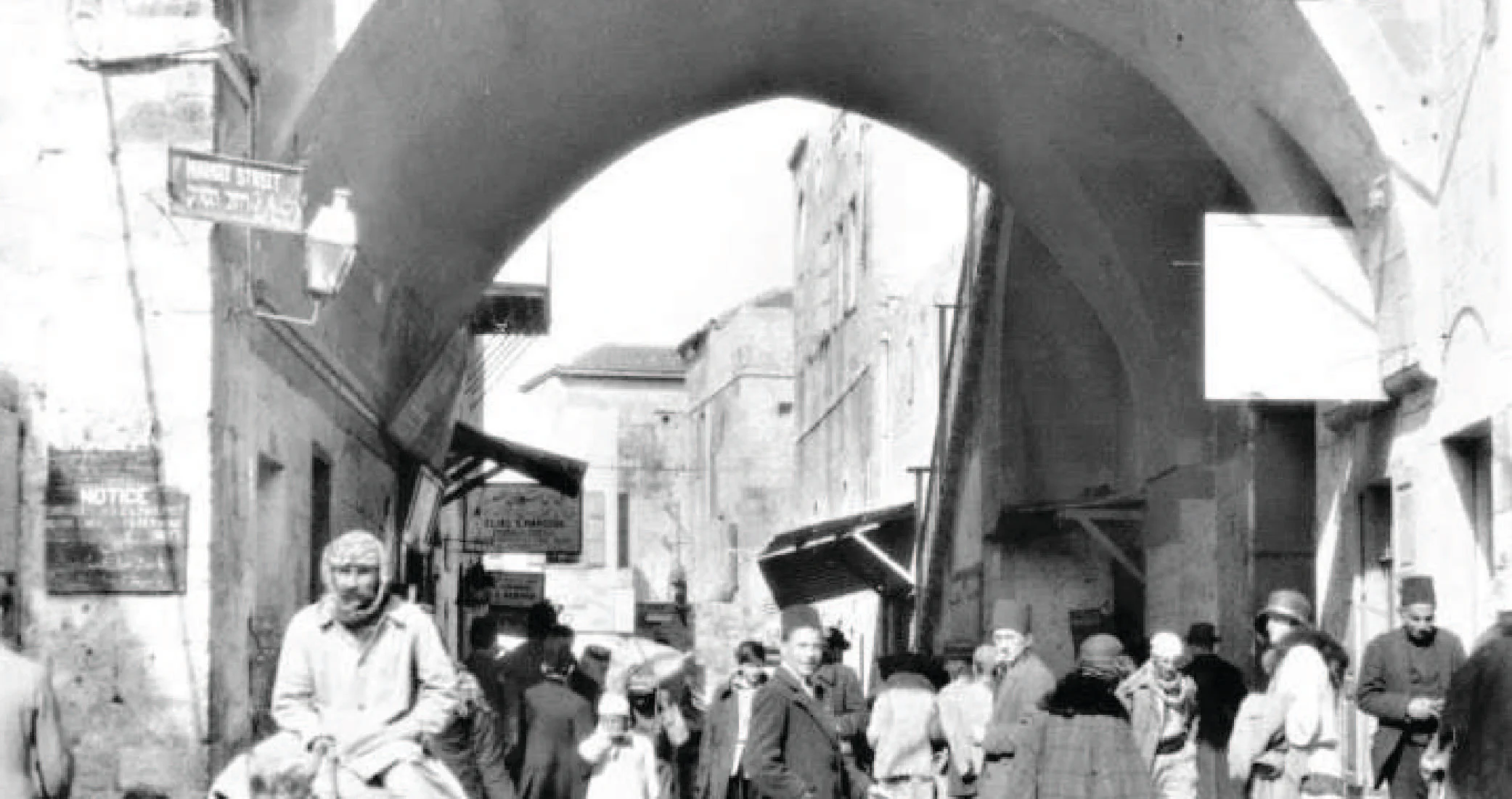 The eastern neighborhood of the Old City in Haifa in the early 1940s – Johnny Mansour Archive
The eastern neighborhood of the Old City in Haifa in the early 1940s – Johnny Mansour Archive
Haifa's first mayor, Zionist leader Abba Hushi, destroyed the lower town adjacent to the port, in a bet on a bottle of whiskey, leaving it impossible to develop the port.
According to Orwa Switat, an expert in urban planning, the state and its institutions “have seized, and continue to seize, refugee properties for privatization, and this transformation has had direct repercussions on the Palestinian historical center in Haifa, where the remnants of the Nakba, especially in the last decade, have been sold under the cover of the law.”
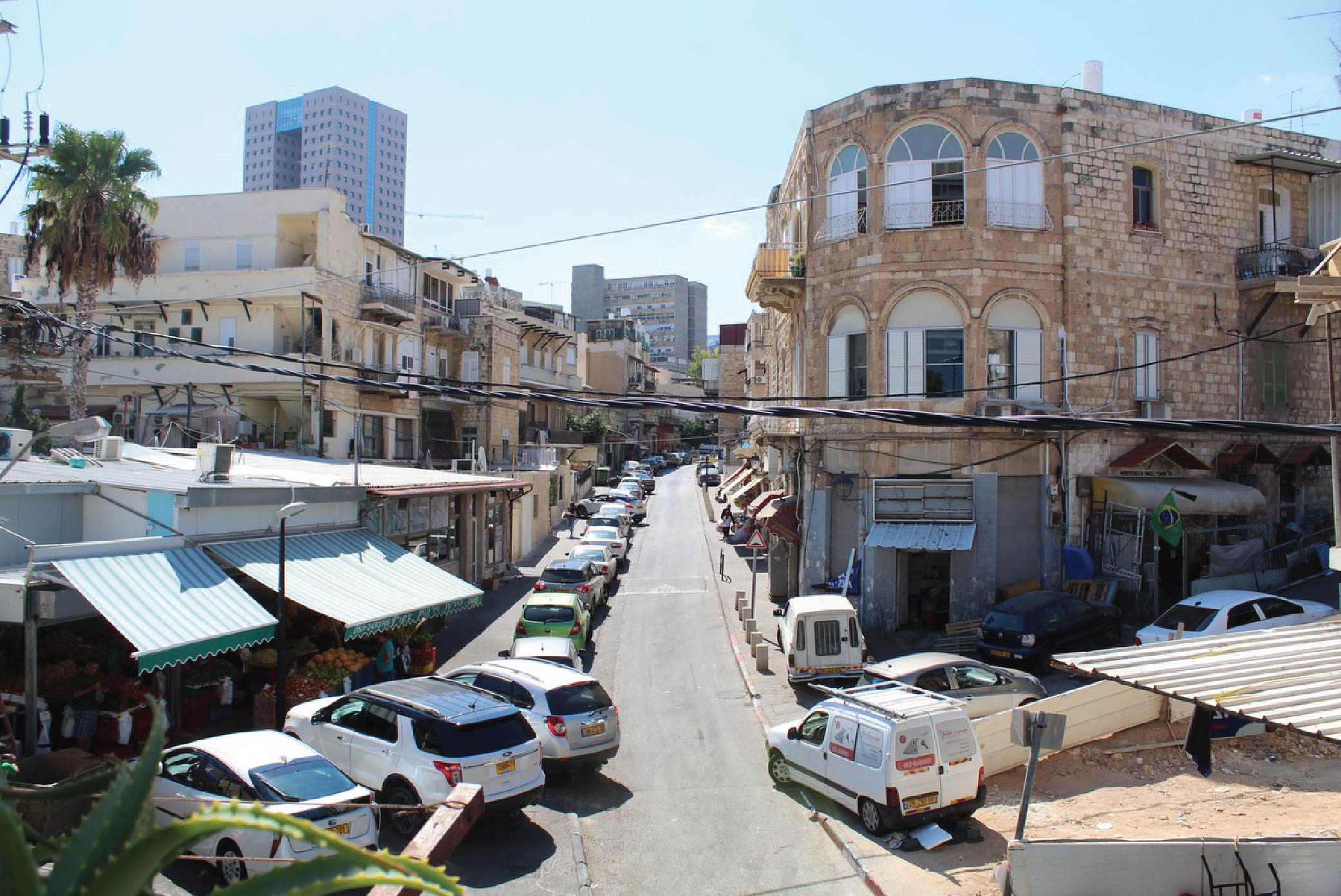 Wadi Nisnas – Photo by Rawda Ghanaim
Wadi Nisnas – Photo by Rawda Ghanaim
Wadi Nisnas and Umm Sabri's Mankousheh
Wadi Nisnas lies east of the Bahá'í Gardens. Wadi Nisnas is one of the most prominent Arab neighborhoods remaining, parts of which still bustle with life. However, due to a policy of deliberate neglect and marginalization by the Israeli municipality of Haifa, it has suffered for decades. The municipality deliberately keeps the neighborhood's old and traditional atmosphere to suit Jewish visitors, and presents Wadi Nisnas as a model of supposed-coexistence by holding artificial celebrations on the holidays of the two peoples.
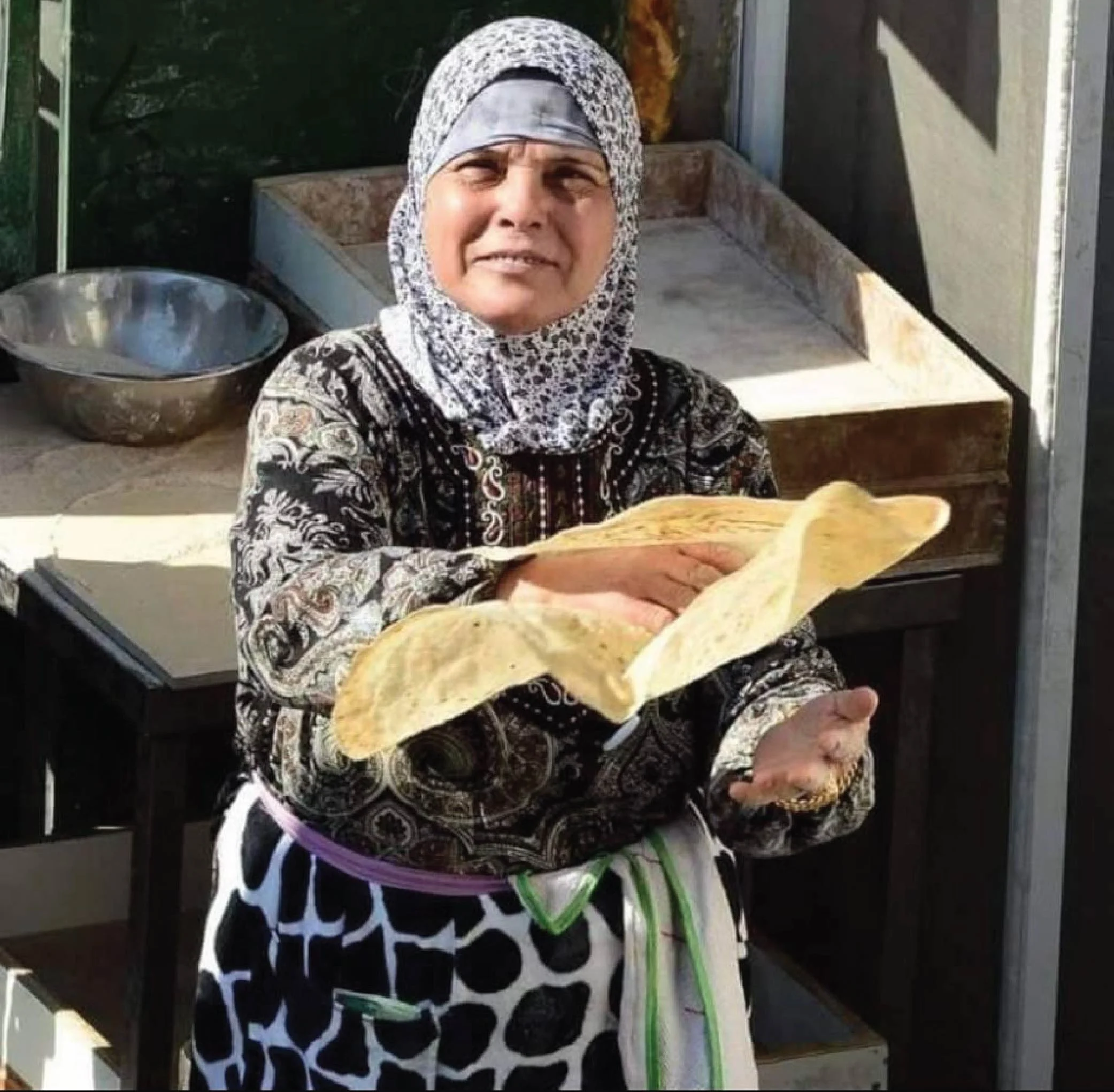 Umm Sabri
Umm Sabri
Here in the valley, you will come across Umm Sabri's Bakery, the humble but popular bakery specializing in bread and manakish. The bakery might have gained its special status among many Palestinians and Arabs, after featuring in the song Questions on My Mind by Faraj Suleiman and Majd Kayyal.
It was in Wadi Nisnas that the Al-Ittihad newspaper, by the Communist Party, was founded. Emile Habiby, Mahmoud Darwish, and Samih al-Qasim worked in its offices. It is the only newspaper that continued to be published after the Nakba. In his book Haifa: The Word that Became a City, Historian Johnny Mansour writes that “Some [newspapers] warned of the Zionist danger to Palestine's future, as did Najib Nassar, the owner of the Al-Karmel newspaper.”
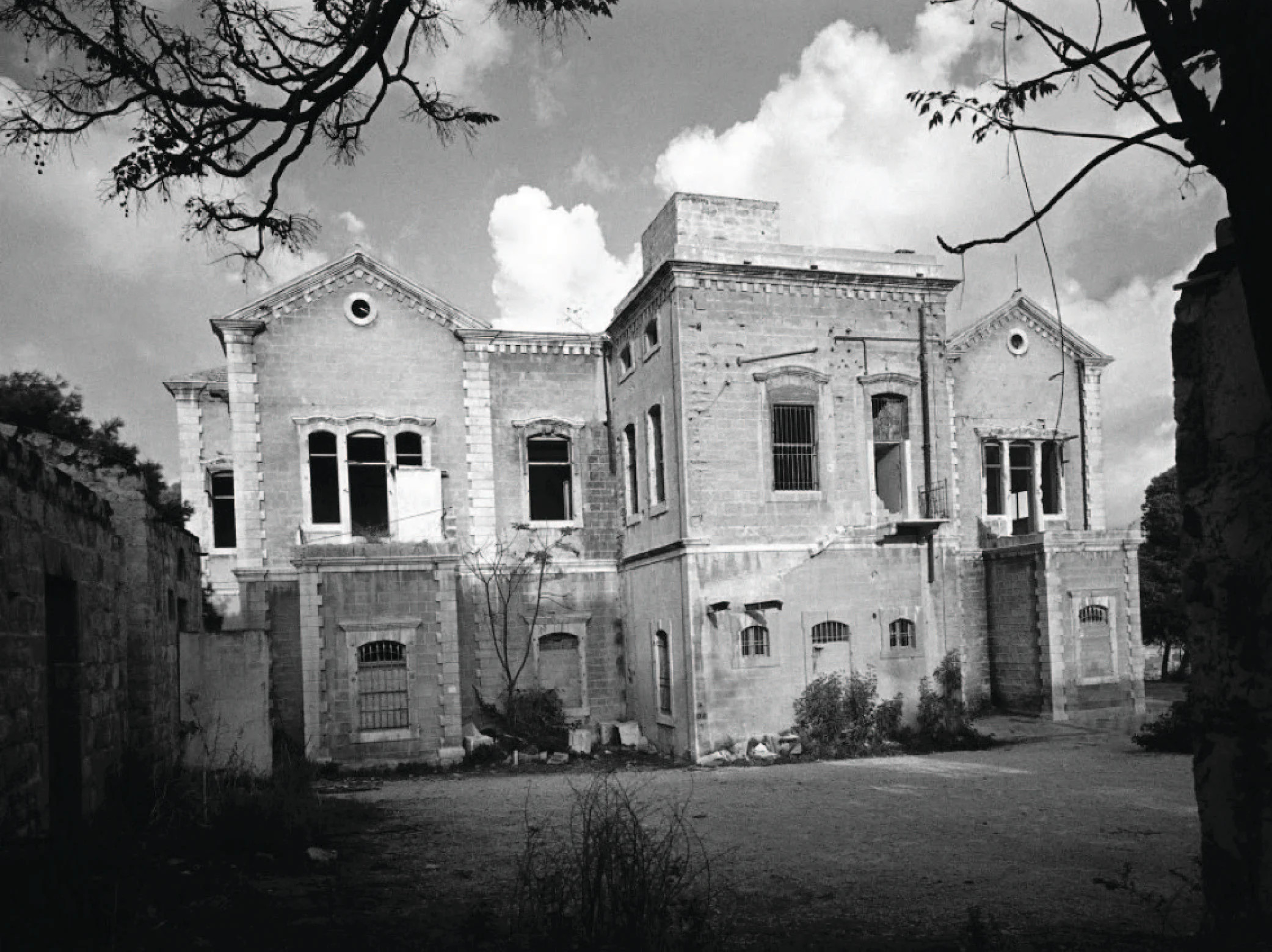 Haifa
Haifa
Despite its grandeur, the Khoury Palace, as seen in archive photos, formed a natural extension of the urban landscape. Had Haifa not fallen, we would have included a colored photograph of the palace. During the organized attacks by the Zionist Haganah on Haifa in 1948, a decisive battle took place in the palace, where the Haganah triumphed, and the palace, along with Haifa, fell.
The disappeared Khoury Palace
As we leave the valley and reach Tariq Al-Anbiya, we come across the site of the now-destroyed Khoury Palace, built by the Beiruti Salim Khoury in 1908. Salim Khoury is recorded in history among those who sold Palestine, after he sold large swathes of land to Zionist associations that worked on settler colonization.
The palace formed a natural extension of the urban landscape. Despite its grandeur, it is "of the place." Had Haifa not fallen, we would share a colored photograph of the palace, instead of this black and white one. During the organized attacks by the Zionist Haganah on Haifa in 1948, a decisive battle took place in the palace, where the Haganah triumphed, and the palace, along with Haifa, fell.
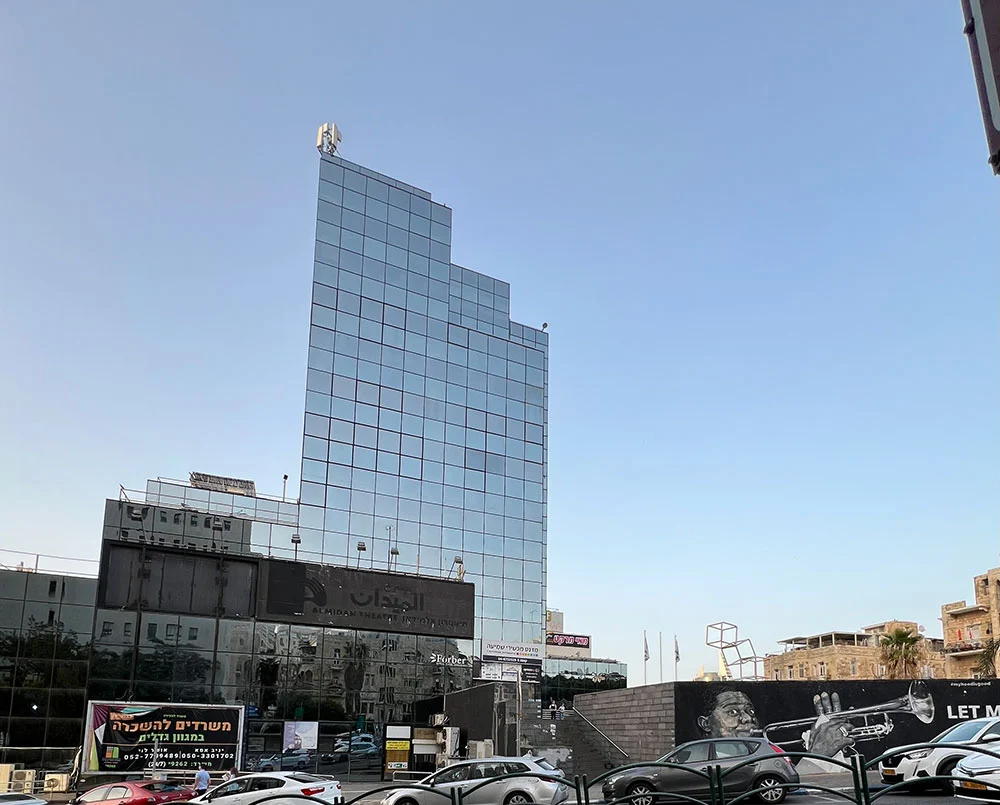 Haifa
Haifa
Today, in the place of this palace stands a building known as the Prophets' Tower. It is a commercial center housing several shops and offices. The building was previously famous among Palestinians for hosting the Al-Midan Theater, which was forced to close its doors after years of restrictions by the Israeli Ministry of Culture. It was reopened two years ago, as the Sard Theatre, under the initiative of artist Ayman Nahas.
The restrictions came as retaliation against the theater after it produced and staged the play Parallel Time in 2014, inspired by the life of the Palestinian prisoner Walid Daqqa. Daqqa died in an Israeli prison on April 7, 2024. “The idea that ten years have passed since the production of Parallel Time, years of an eventful life, while Walid remained in prison, is horrifying,” director Bashar Murkus tells Raseef22.
He adds, “Perhaps this experience teaches us that the cultural movement is trapped in a larger prison. We, too, are imprisoned within the occupation machine. We are all crushed in it while time moves on.”
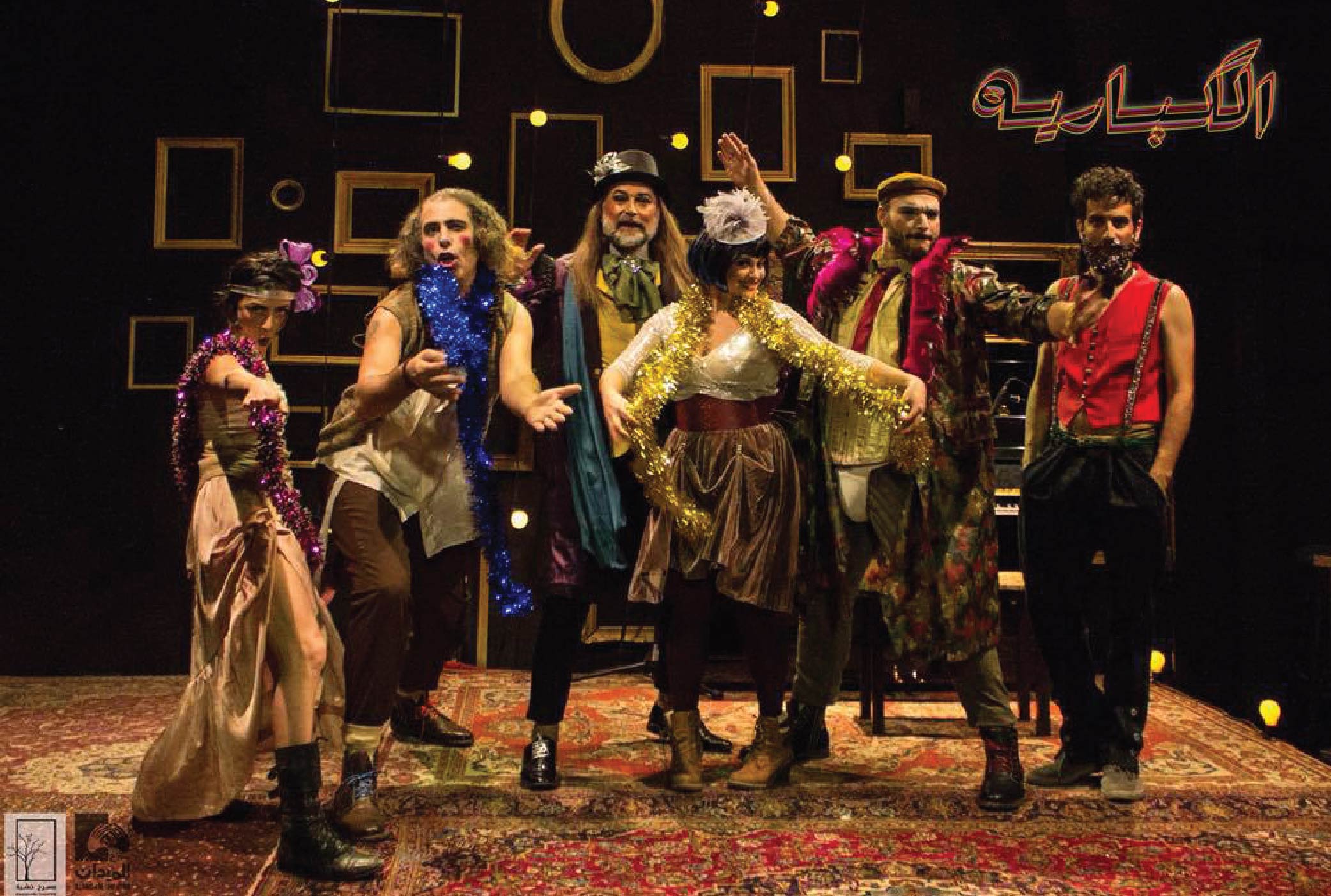 Haifa
Haifa
Khashabi Theater: The heart of the displaced city
Artists Bashar Murkus and Khuloud Tannous currently manage Khashabi Theater, which they founded in 2015 in a prestigious Ottoman building on al-Khatib Street, which connects Wadi Salib with the lower town, Al-Tahta. The theater, which showcases its productions in Palestine and around the world, aims to provide a free space for Palestinian artists and facilitate experimentation, creativity, and research.
After exiting the theater and heading uphill, we are close to the remaining buildings of Wadi Salib, most of which were demolished in 1948. The surviving buildings were transformed into technology companies and law firms and a house for the extended family of writer Ghassan Kanafani.
I have always been drawn to Haifa, as a daughter of a mountainous village in the Galilee, Sha'ab Village. I was captivated by its mountains and sea. Despite my deep love for my village, I have always dreamed of a connection to Haifa. This sentiment is shared by many Palestinians of 1948.
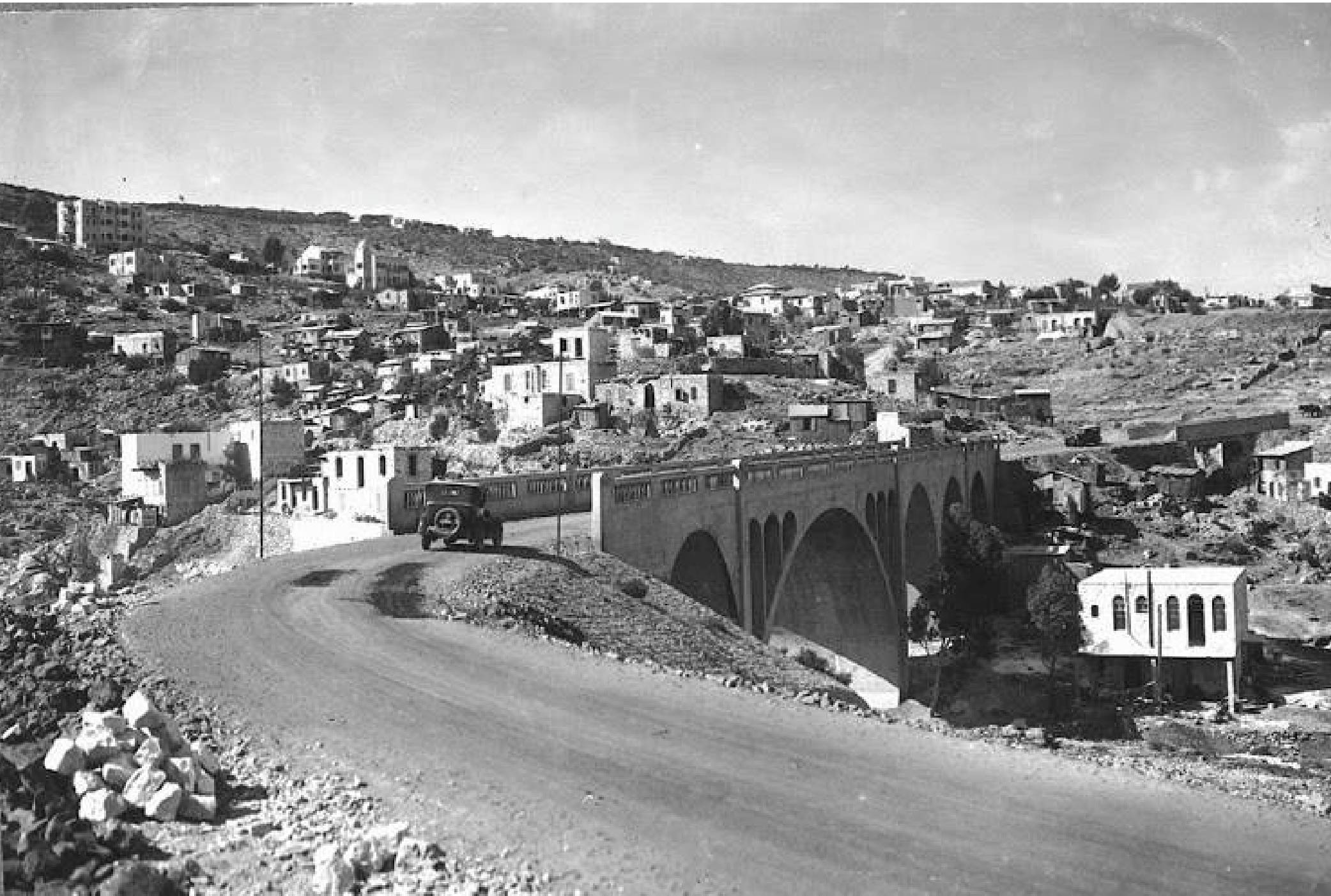 Roshmiya Bridge and underneath it is the Ghazazweh neighborhood (Source: Palestine Remembered)
Roshmiya Bridge and underneath it is the Ghazazweh neighborhood (Source: Palestine Remembered)
Gazans get a share too: The Ghazazweh neighborhood
Haifa is a city of immigrants and newcomers. Perhaps it remains so to this day. A significant portion of the Palestinians residing there came from various areas of the Galilee and the 1948 territories. They studied at its university or came seeking employment. Personally, I have always been drawn to Haifa, as a daughter of a mountainous village in the Galilee, Sha'ab Village. I was captivated by its mountains and sea. Despite my deep love for my village, I have always dreamed of a connection to Haifa. This sentiment is shared by many Palestinians of 1948.
From the history of immigration, we recall from history what connects us to the present. When the Ottoman rule ended, and the Sultan's government fell, Palestine and other Arab countries fell under the yoke of European colonialism. Haifa witnessed a new surge of development and progress, according to historian Johnny Mansour, author of the book Haifa, the Word that Became a City. Mansour explains, “Dozens of Gazan families moved to Haifa, thanks to the extension of the railway line from the Egyptian city of Qantara to Haifa via Gaza in 1918.”
According to Mansour, more Gazans flocked to the area after the situation stabilized with the establishment of the British mandate. The neighborhood inhabited by the people of Gaza was known as Al-Ghazawiya. We remember this juncture in Haifa's history as a natural movement for the Palestinian body. We also remember it because we cannot look at the Nakba of the city and the Nakba of Palestine in general, and ignore the ongoing Nakba against Gaza and its people.
Raseef22 is a not for profit entity. Our focus is on quality journalism. Every contribution to the NasRaseef membership goes directly towards journalism production. We stand independent, not accepting corporate sponsorships, sponsored content or political funding.
Support our mission to keep Raseef22 available to all readers by clicking here!
Interested in writing with us? Check our pitch process here!
